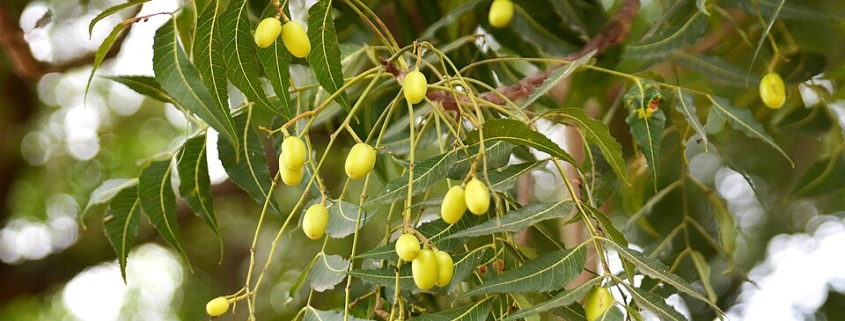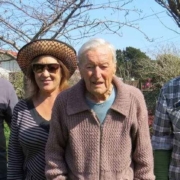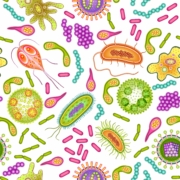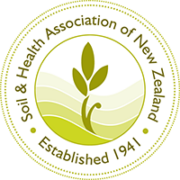Neem: Nature’s healing gift to humanity
Book review by Katherine Smith
We hope you enjoy this free article from OrganicNZ. Join us to access more, exclusive member-only content
It’s appropriate that the cover of this book features its author, Klaus Ferlow, standing beside a neem tree, his left arm reaching around to embrace its trunk in a fraternal greeting. That’s because Ferlow (originally from Germany) helped to introduce people in North America to the healing properties of the neem tree, after emigrating to Canada in 1975 and founding Ferlow Botanicals approximately 20 years later.
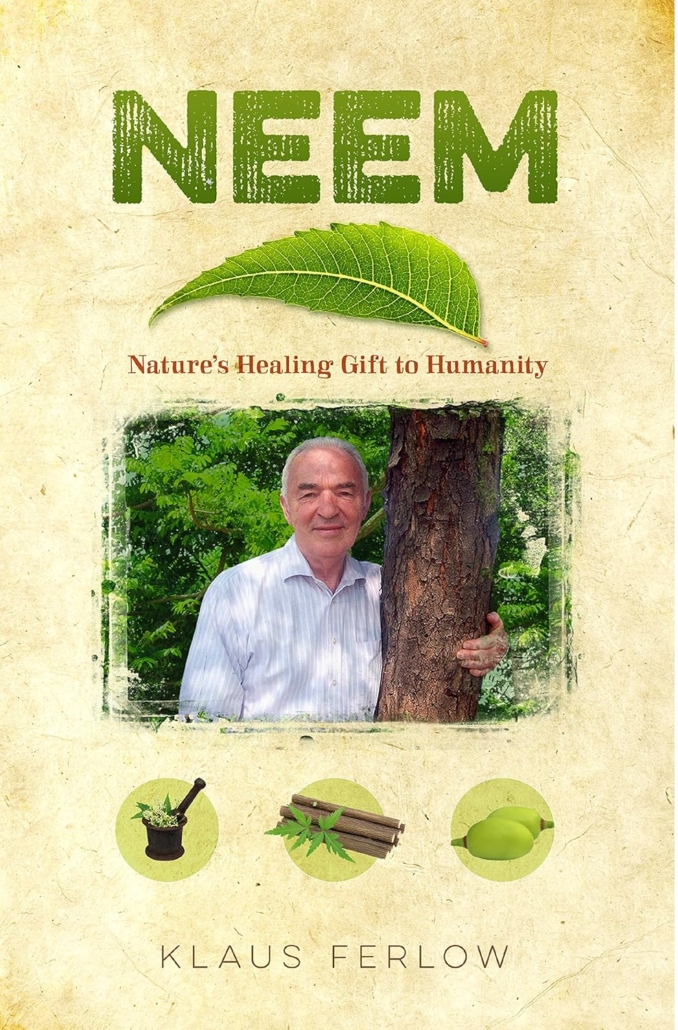
Klaus Ferlow credits his (now late) wife Rose with introducing him to neem by urging him to watch a TV programme called ‘What’s in a Neem’, narrated by David Suzuki. Inspired by the documentary, Ferlow obtained some neem extract and applied a neem cream to the psoriasis on his scalp and elbow and got relief from this condition in just three weeks. Having previously trained as a herbalist, he decided to set up a business to bring the benefits of neem to the North American market. Ferlow Botanicals is now rum by the Ferlows’ sons, Peter and Harald, and Ruth (Peter’s wife).
Klaus Ferlow has maintained his interest in neem and founded the organisation Neem Research “to promote neem for human, animal and environmental health”. His new book, Neem: Nature’s healing gift to humanity, includes profiles of neem researchers and entrepreneurs. He gives special credit to the late Professor Dr. Heinrich Schmutterer as ‘the father of modern neem’. It was his observation that neem trees had survived a plague of locusts that swept through Sudan when he was on a field trip there in 1959 that caused him to wonder if a natural insect repellent could be present that led to his work researching neem and writing the definitive textbook on neem, The Neem Tree (1995, 893 pages).

From the home of the neem tree in India, knowledge about the tree has spread to North and South America, the Caribbean, Africa and Australia.
Among the examples described in the book is Abaco Neem, a farm in the Bahamas that includes neem trees intercropped with fruit trees. (In all, 120 varieties of fruiting and flowering trees are grown on the farm.) Spiders and beneficial insects like butterflies and bees have thrived in this environment and hives on the farm allow neem honey to be produced as well as other neem-based health and personal care products. Some of these products incorporate beeswax from the hives. Among the products produced by Abaco Neem is a neem-based insect repellent.
ABOVE: Collection of neem seeds for the preparation of seed balls. Photo: Paryavarana Margadarsi Vaisakhi via Wikimedia Commons
The farm has organic certification and the fruit from the neem trees also has the benefit of providing food for birds; a visiting intern from France identified almost 40 different bird species on a single day.
In addition to being used to promote human health when used as a supplement or medicine, neem has the potential to boost food production. Neem extracts can be used as insecticides and ‘neem cake’ made from defatted neem seeds can be used as a fertiliser that also helps to protect plants from nematodes. The book also reports that a constituent of neem (azadirachtin) is being developed as a food additive for farmed salmon in Scotland to treat sea lice infestation of the fish.
In India, a company called Nisarga Biotech has been producing supercritical extracts of neem (using CO2 to extract constituents from the plant) which may be used as botanical pesticides, or in cosmetics or personal or medicinal products. Their product line includes a neem toothpaste and mouthwash – a modern iteration of the tradition in Indian villages of using neem twigs as a toothbrush. The company has also ‘secured a patent for the manufacture of neem leaf CO2 extract for use in treating oral and colon cancer’.
Neem: Nature’s Healing Gift to Humanity is a testament to the hard work and vision of its author and all the individuals whose businesses feature in its pages.
• Published by Neem Research, 2016, 258 pages, ISBN 9780993727504
• Available via local booksellers or from Neem Research.
About the reviewer: Katherine Smith is the co-editor of The NZ Journal of Natural Medicine, which first published this review in issue 54 (February 2025).
Photo at top: Azadirachta indica – the neem tree. Photograph by Kwameghana (Bright Kwame Ayisi) via Wikimedia Commons

